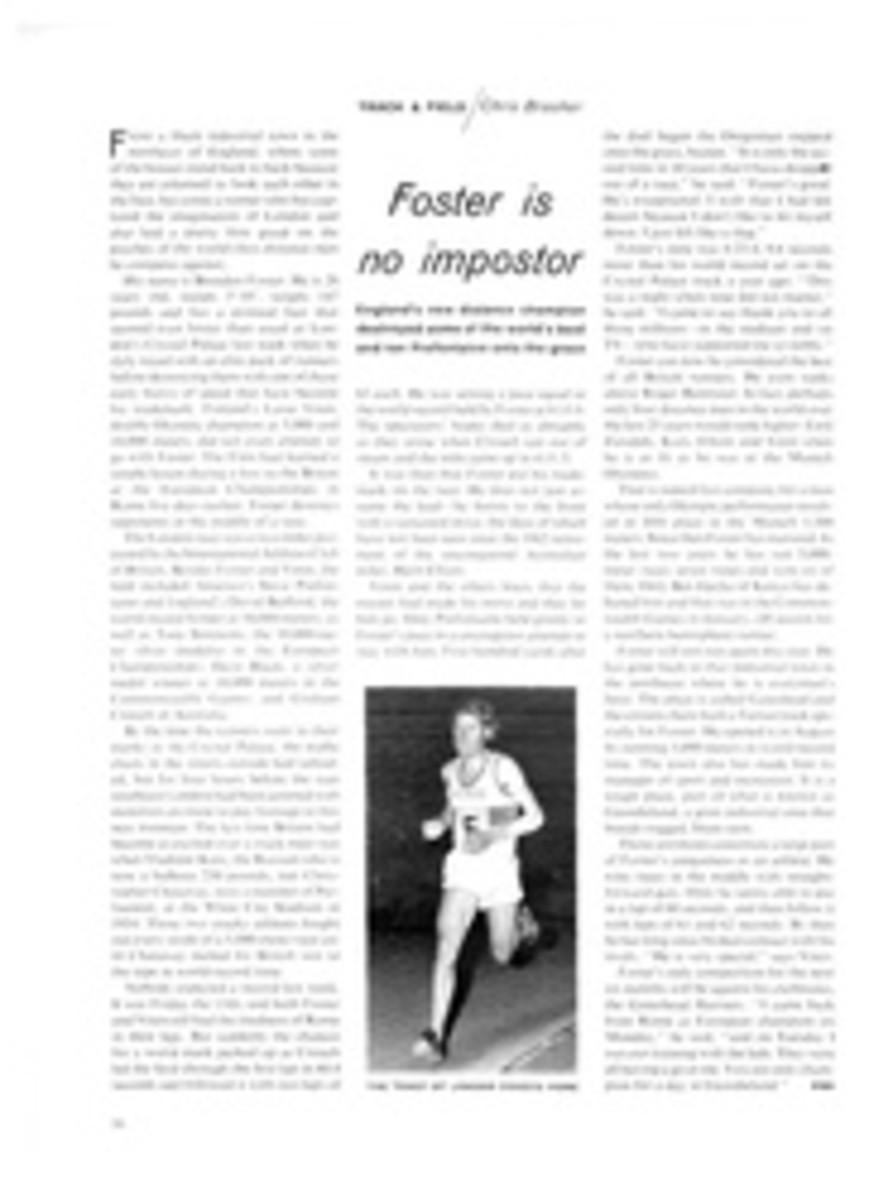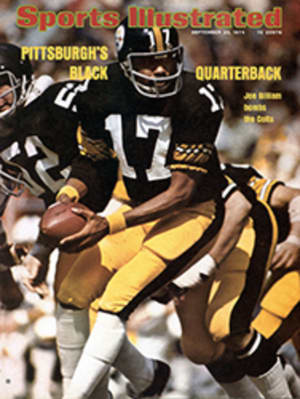
SCORECARD
KICK COMING
Absolutely nobody expects the United States to be among the final 20 in 1978's World Cup soccer competition, except members of this year's U.S. national team, the country's first. Before a crowd of 22,000 in Dallas earlier this month, the more northerly Americans came within an ace of tying Mexico, the same Mexican team that tied Cup semifinalist Brazil 1-1 before 170,000 last spring in Rio. Only a diving save by Mexico's superb goaltender Ignacio Calderon, who was twice as busy as the U.S.'s Bob Rigby of the Philadelphia Atoms, prevented a last-minute header by Kyle Rote Jr. of the Dallas Tornado from going in.
The U.S. team is being coached by Dettmar Cramer, a West German with impressive credentials. Cramer took a Japanese team that was headed nowhere to a bronze medal in the 1964 Olympics. He devoted subsequent years to the emerging nations, then decided in 1974 that his best chance was with that potential gold mine, the U.S. He will stick by this country at least until 1978, the next Cup year.
The hope is there, says Cramer. Three days before its 1-0 loss in Dallas, the U.S. went down 3-1 to the same Mexicans in Monterrey. "We were able to stay with them at the international pace for only 60 minutes the first time," Cramer said. "We were with them the full 90 minutes Sunday."
The U.S. team is made up of the best of the home-raised players now performing in the pro North American Soccer League. They and those who may supplant them will be aiming at the elimination rounds two years away. To toughen up, they plan to take on powerful Yugoslavia in December and a European tour next spring.
FEAR STRIKES OUT
Bill Travis was officiating at his first football game at Warrior High School outside Birmingham, Ala., and if he thought he was nervous he had only to look at the captain of the kicking team to know what real fright was. Travis has dined out on the story for years.
"Captain, are you ready?" he asked the petrified lad. As combination umpire/ field judge, Travis was to dash for the sideline after an affirmative nod and signal the referee downfield, who would start the game. But there was no answer. The young man stood erect and still next to the teed-up ball, looking straight ahead.
"Captain, are you ready?" Travis asked in a louder voice. He was ignored.
Travis stepped closer. Almost nose to nose with the boy, he asked a third time, "Captain, are you ready to play football?" Still no answer. The boy obviously was too shaky to reply. Travis decided that only action would bring him out of the spell.
"Captain, we're starting this game," he said sharply, then ran off the field and threw his right arm into the air to signal the referee. It was only then that he heard The Star-Spangled Banner.
THE BIG GO BY
One trouble New Orleans' Superdome has not had is with the wind. Hurricane Carmen breezed close to town, but no special precautions were taken other than to secure loose material outside the stadium. The structure was shaped with hurricane-force winds in mind and model-tested in a wind tunnel. The main concern of its backers is not that the dome will blow its top but whether they ever will get anybody under it.
FLIPPING OUT
The flip, at least temporarily, is a flop. At its recent meeting during the European track and field championships in Rome, the International Amateur Athletic Federation banned the somersault style of long jumping (SI, July 29). Too dangerous, the feds said.
One person who is not hopping to the same tune is Igor Ter-Ovanesyan, now the Soviet coach who gained fame as one of the best of the straight jumpers. "All the jumping events are getting to be more acrobatic," he said at Rome. "Of course the flip is kind of dangerous, but if you're afraid, don't jump. We have several good young jumpers who are using the flip, and I'm not going to tell them to stop. I'm sure the rule will be changed. It's a better way to jump."
IT FIGURES
If you are one of those who believes golf is a humbling game, think of baseball as Reggie Jackson does. "When you play this game 10 years, go to bat 7,000 times and get 2,000 hits, you know what that means?" asks the Oakland rightfielder. "You've gone 0 for 5,000."
NO ROOM AT THE TOP
It was bound to happen. The Zermatt Tourist Bureau reported that on an average day this summer 150 climbers swarmed toward the 14,701-foot summit of the Matterhorn, and those who did not scale the heights early were queuing up on a ledge below. The top, 50 yards long and reasonably flat, could—and sometimes did—accommodate 40 people at a time. Latecomers waited their turn below in a kind of orbit, safeguarded by ropes strung by guides.
"It was disgusting," one disgusted climber said. "The summit was a garbage heap. It stunk to high heaven." Once considered one of the world's challenges, the peak was littered with empty cans and bottles and half-eaten food. Worse yet, a chemical toilet installed on the waiting ledge did not function properly.
High time, Swiss authorities reasoned, to set things in good odor. They ordered helicopters aloft to bring the garbage to earth, because it was there.
TOO MANY MIRACLES
Scoring a hole in one in Japan is an expensive proposition. More than a round of drinks is expected of the lucky golfer. A lavish geisha party is more like it.
Inevitably, an enterprising businessman saw money in the custom and established the Nippon Hole-in-One Club to insure members, at $3.51 a year, against the cost of the party, which can run as high as $2,500. But, given Japan's mad passion for golf, the club found itself in trouble. Management figured optimistically that only one in every 1,000 players a year would ace a hole. In the first year 54 of the 12,000 members did. Nobody knows whether Japanese are just better short-hole players than other golfers around the world or whether the home courses are tailor-made for holes in one. The Nippon club does know that it is bankrupt.
CALLING A SPADE
Bob Short, who has reduced his holding in the Texas Rangers to 10% and would like to own not a smidgen of minor league property, has produced a solution to his problem that, odds on, is the worst of the season. He wants to scramble the top minors in with the 24 existing big-league teams and pretend he has created a 40-team major league omelet.
Unlike most menu writers, Short knows exactly what he is preparing. "Naturally, the quality of talent will drop," he says. "You won't have a team equal to the 1927 Yankees, but you will have teams that compete with the Yankees of these times. Because of the competition, somebody will finish first and somebody will finish last. There's a top and bottom to every manure pile."
Right.
GUT CHECK
Simulium venustum has been dead and gone since July 4, and no regrets. But his cousin, Simulium nyssa, has come to take over his job, which is biting campers and fishermen in the Maine woods—and there are regrets aplenty. S. nyssa will be around until he earns his just reward in a killing frost.
Both S's are black flies. In the good old days of polluted streams and heavy concentrations of DDT, S. nyssa had stayed pretty much isolated. Then somebody got the bright idea of cleaning up the Penobscot River to encourage a salmon renaissance. The salmon came, and so did S. nyssa, in clouds.
By any name, the Maine blackfly is a tough hombre. He bites by tearing off flesh with lancetlike blades that slice into the tissue. He then smears on an anticoagulant to keep the blood flowing and drinks until gorged—or crushed by his victim. Dr. Ivan McDaniel, an entomologist with the University of Maine at Orono, thinks a warming trend in the weather may be another reason why Maine woodsmen in the Orono area are now contending with the pests the entire summer. He has found no single homemade or commercial repellent that will discourage the insects equally well for everyone, but suggests—lamely, we think—that those venturing into the woods should experiment to find what works best for them.
Up in Alaska, Guy Okakok, Barrow correspondent for the Tundra Times, knows what to do about the big, lush mosquitoes that move in on the fall hunters in his country. You take a tip from the Kakmoliks.
"Whenever they shoot a deer," Okakok writes, "first they open the belly and rub their hands and face with the blood, all over them. After the blood dries, mosquitoes never sting them at all. And it always works, too. Why not try it?"
You'll like it?
GRAND CANYON SWEAT
Now that the daredevil season has temporarily subsided, there is reason to believe that maybe the grandest feat of courage was not Evel Knievel's abortive rim shot nor Mike King's record 155-foot dive into eight feet of water but a little-publicized run Bill Emmerton made one blistering day last month into the Grand Canyon and out again.
Emmerton is the 53-year-old Australian distance runner (SI, Oct. 6, 1969) who six years ago this summer ran 100 miles nonstop through Death Valley and temperatures averaging 125° in 36 hours and 35 minutes. He said after his latest run that he would repeat the Death Valley trip 10 times over before ever facing the canyon trip again.
Terrified of heights, Emmerton found himself racing along trails that at times were only 18 inches wide, solid cliff wall on one side and sheer drop on the other. Once, in the descent, he almost did go off the South Kaibab Trail when he rounded a sharp corner and saw nothing but space directly ahead.
From 7,000 feet, Emmerton covered the seven miles to the canyon floor at 2,200 feet in an hour and a half. After an 11-minute stop at Cottonwood Ranch, he began the torturous ascent to the north rim (elevation 8,200 feet and 14 miles away) in midday temperatures of 110°. He skittered past three rattlesnakes, stepped on rocks that bruised the soles of his feet severely and barely escaped a large rock that landed on the trail behind him. Toward the end, having had only three mouthfuls of water to drink, a handful of raisins and a small bar of chocolate to eat, Emmerton was, for the first time in his life, beaten. At several points, out of fear and fatigue, he almost crawled. His head spun; his legs, which had grown sore on the way down, pained him fiercely. In the last mile he began to bleed at the nose. Never in his life had Emmerton thought of quitting. He almost did this time. When he arrived at the top, seven hours and 45 minutes and 20.6 miles after the start, he apologized for being unable to complete his planned trip—doubling back over the same route—and finis. He will not defend his record against any man with the grit to go after it.
ILLUSTRATION
THEY SAID IT
•Jethro Pugh, Dallas defensive end: "If it weren't for a name like Jethro Pugh I might be anonymous."
•Al Conover, Rice University football coach, on his snappy new pair of alligator shoes: "I took them home and put them in the closet. Guess what? They ate my Hush Puppies."
•Rick McCutcheon, ex-starter on the University of Minnesota basketball team after switching to Arizona State because of an "impossible situation": "If I'm going to be unhappy, I might as well be unhappy where it's warm."
•Anne Hayes, wife of Ohio State's Woody Hayes, asked if she had ever contemplated divorce: "Divorce, no. Murder, yes."

